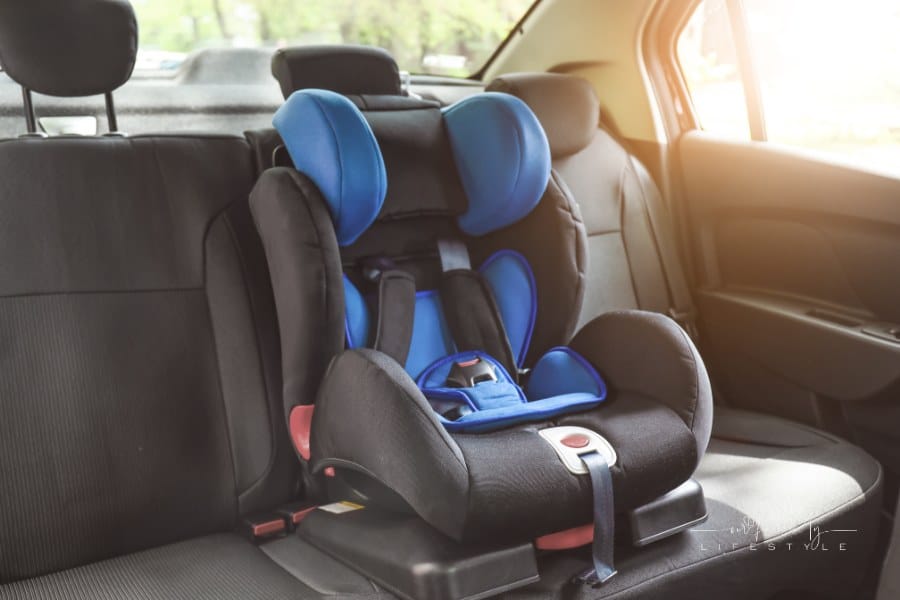Car Seat Safety Guide
Ensuring the safety of your child during car travel is of paramount importance.
Car seats play a crucial role in safeguarding your child, and understanding the best practices for their use is essential.
This Car Seat Safety Guide provides valuable insights into the types of car seats, their proper orientation, and where to place them within your vehicle.
By following these guidelines, you can rest assured that you’re taking the necessary steps to protect your child during every journey.

Types of Car Seats for Children
Car seats are essential for child safety during travel, tailored to accommodate children at various developmental stages.
Here, we explore the various types of car seats for child passengers and their appropriateness for your child’s age and size.
Infant-Only Car Seats
- Designed for newborns and smaller infants.
- Exclusively rear-facing.
- Suitable for babies up to approximately 35 pounds (model-dependent).
- Some models offer versatility, functioning as carriers, chairs, or rockers outside the car.
- Safety precautions include never leaving the baby unattended in the car seat outside the car, promptly moving the baby to a safe sleep spot if they fall asleep, and limiting the time spent in the car seat.
Convertible Car Seats
- Versatile seats are suitable for babies and young children.
- Accommodate children from birth up to around 65 pounds or more, depending on the model.
- Serve as both rear-facing and forward-facing seats, adapting to the child’s height and weight.
- “All-in-one” or “3-in-one” models can transition from rear-facing to front-facing to booster seats by removing the harness.
- It is a cost-effective choice, eliminating the need for a separate infant-only seat (though very small babies may find infant-only seats a better fit).
Forward-Facing-Only Car Seats
- Intended for children outgrowing rear-facing car seats in weight or height.
- Exclusively forward-facing with a harness and buckle.
- Some models convert into booster seats for older children using the car’s seat belt.
Booster Seats
- Forward-facing car seats are designed for older children.
- Utilize the car’s seat belt for restraint.
- Children transition to booster seats after outgrowing the height and weight limits of regular car seats.
How Long Should My Child Remain Rear-Facing in the Car?
Ensuring your child’s safety in a car involves not only selecting the appropriate car seat but also correctly positioning and orienting it.
If you’re using an infant-only car seat, your baby should always be rear-facing.
When your child outgrows the infant seat in terms of height or weight, it’s time to transition to a convertible car seat, which should also be rear-facing until they reach the highest height and weight limits for that seat.
It’s advisable to keep smaller children in this rear-facing position until they are 3 or 4 years old, as it offers greater protection to their head and neck in case of a collision.
Where Is the Safest Spot to Place the Car Seat?
When it comes to where you place the car seat in your vehicle, safety is paramount.
The safest location for babies and children is in the back middle seat of the car. Alternatively, you can install a car seat in the rear window seats.
However, it’s crucial never to put any type of infant or child’s car seat in the front seat of a car equipped with airbags.
Experienced Denver car accident attorneys at Manning Law have handled cases in which the force of airbag deployment in a collision results in severe injuries or even fatalities.
In cases where front seat placement is unavoidable, such as in a two-seater car or due to space limitations, it’s vital to turn off the airbag and adjust the seat as far back as possible to minimize potential risks.
Following these guidelines ensures your child’s safety during car travel.
Bottom Line
The safety of your child should never be compromised when on the road.
This Car Seat Safety Guide has shed light on the critical aspects of selecting the right car seat, ensuring it’s correctly oriented, and placing it in the safest location within your vehicle.
By adhering to these guidelines and staying informed about the latest safety recommendations, you are equipped to provide the highest level of protection for your little one.
Remember, responsible car seat usage is a proactive way to guarantee your child’s well-being during car travel.
If you want more tips on how to keep your children safe, you can check Our Family Lifestyle.


